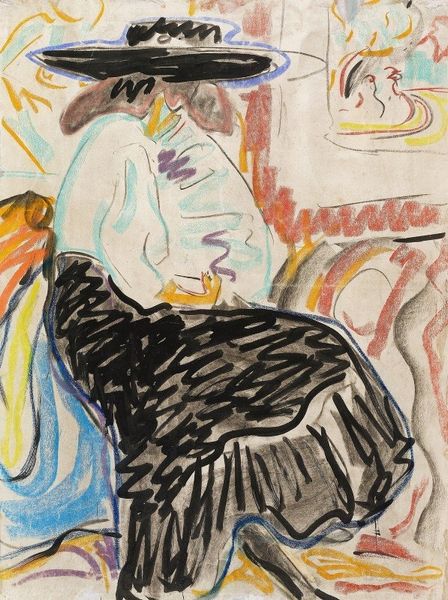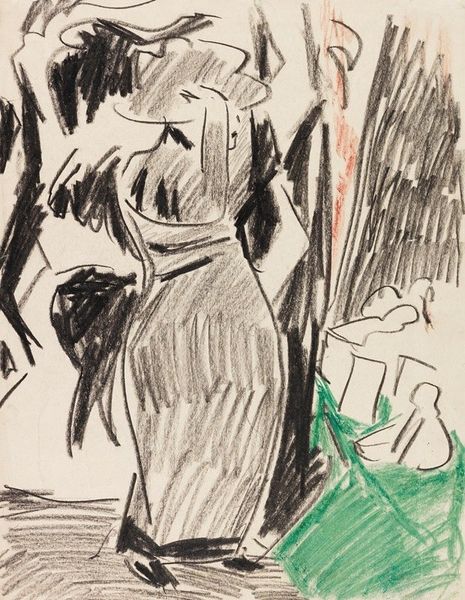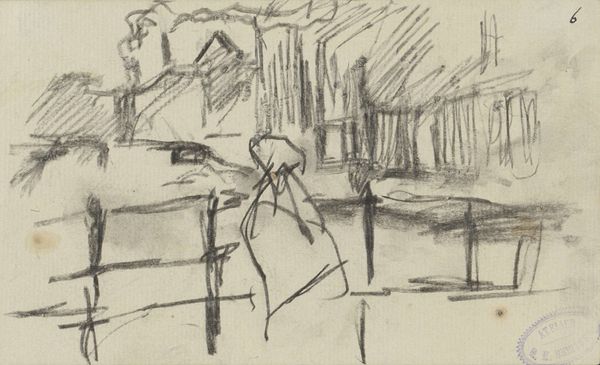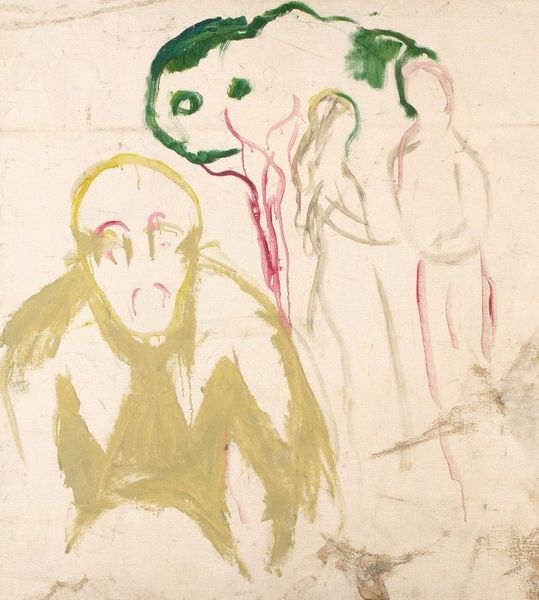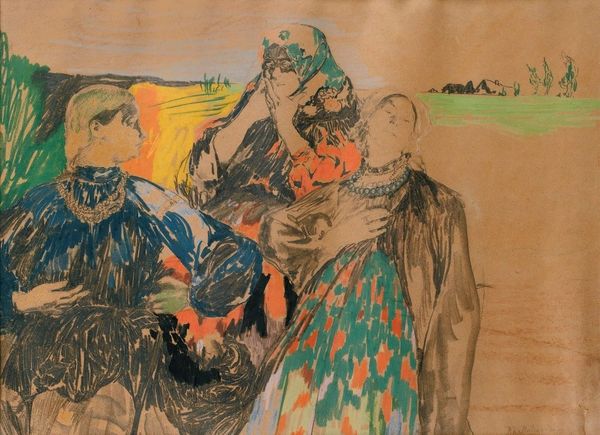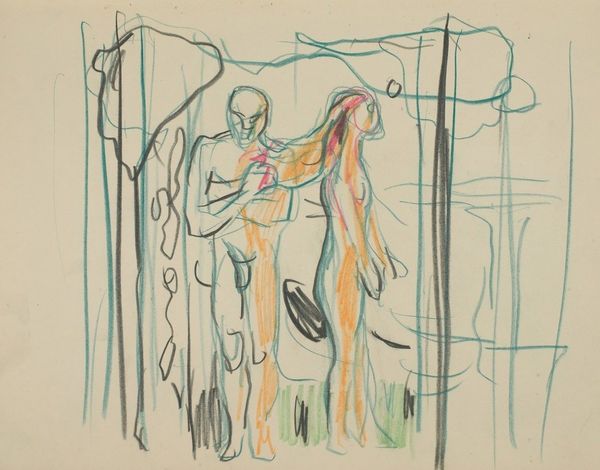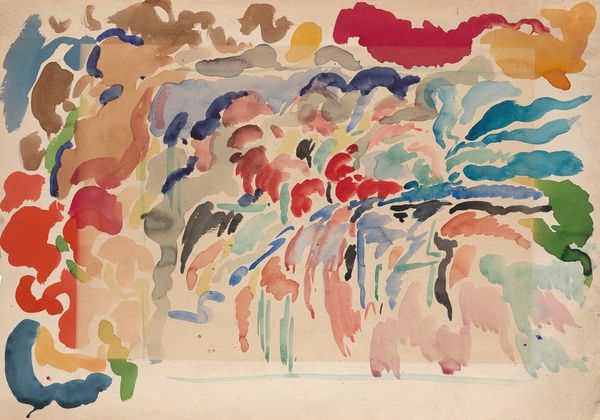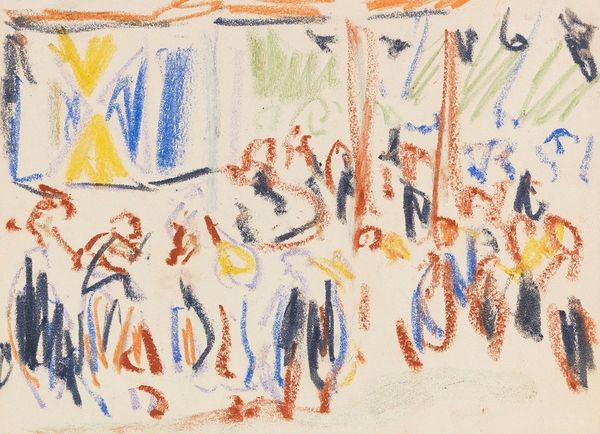
Copyright: Public Domain: Artvee
Curator: This is Edvard Munch’s 1942 watercolor, "Møte ved veranda," which translates to "Meeting by the Veranda." Editor: My immediate reaction is that there’s an ephemeral quality to this work. The soft watercolor washes create a dreamlike, almost faded memory of a scene. It’s really quite delicate, especially considering the period. Curator: Considering that delicate rendering, let’s consider the production. Watercolour allows for a quick process, enabling immediacy and ease of transportation; perhaps reflecting a period of change and mobility during wartime. It would also provide a change to large, and less easy transported works. Editor: Absolutely, and it invites us to reflect on the scene itself. We see figures on a veranda and in a garden setting—what narratives are suggested? How does gender, race, and class inform these interactions within such an intimate space during the rise of nationalism across Europe? The social dynamic is so suggestive. Are we looking at the leisure of the bourgeoise amidst world war? Curator: Interesting perspective. But I wonder how much of this can also be read simply by observing Munch’s hand. How does he handle the brush, the dilution of paint? I’m particularly drawn to how the architectural forms in the veranda, rendered in light washes, seem to interact with the figures, blurring boundaries between public and private. Are these class lines as fixed as we suggest, or are they as permeable and changeable as his technique. Editor: A fair point. The haziness definitely suggests a psychological dimension; a meeting in transition, obscured by the anxieties of the moment. Munch often grappled with themes of isolation and mortality, and it's plausible to see this reflected in the ambiguous interactions he depicts. What power dynamics are inherent in these types of exchanges, regardless of the context? Curator: Ultimately, the beauty of it rests on that fine line. The interplay of the delicate washes, the very liquidity of the medium – it brings a fragility to an observation of society on the brink. It asks the question, are solid boundaries, concrete situations, things we make ourselves? Editor: Yes. Perhaps Munch captures not just a specific encounter on a veranda, but a universal question. Are social narratives fixed, or fluid, and is social meeting always just an interplay of identity? A conversation in watercolor.
Comments
No comments
Be the first to comment and join the conversation on the ultimate creative platform.

